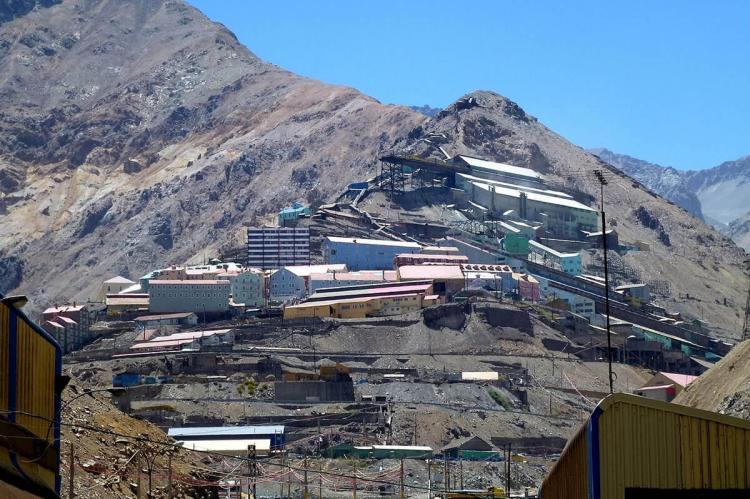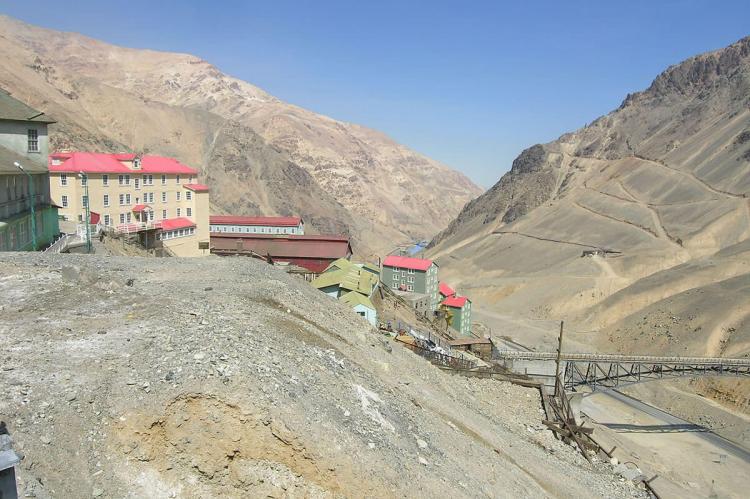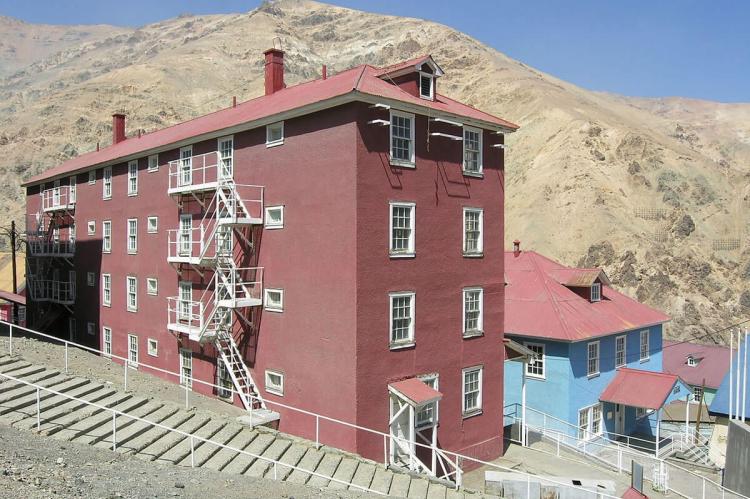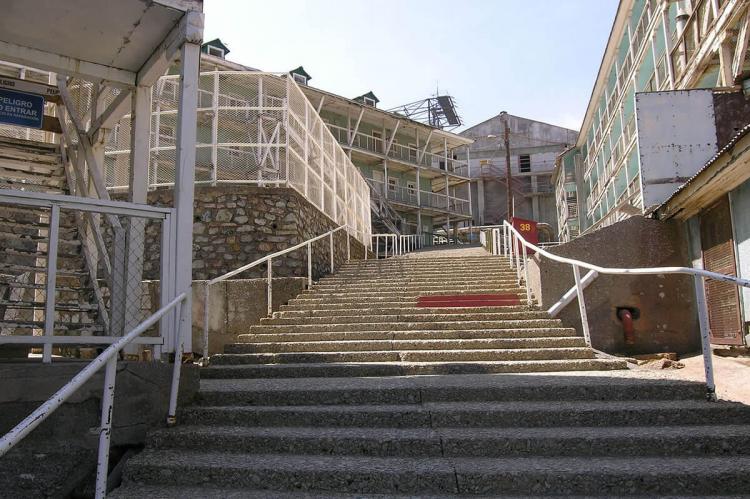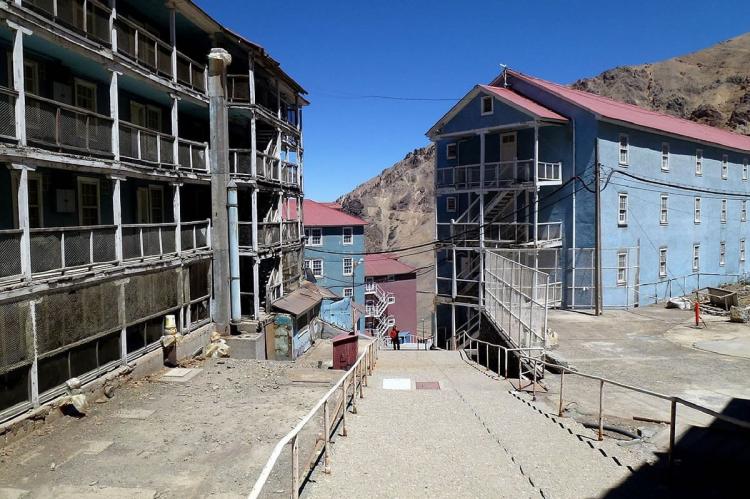Sewell: The City of Stairs - A Legacy Carved into the Andes
Perched high in the Chilean Andes, Sewell is a testament to human ingenuity and the pioneering spirit of the early 20th century. This abandoned mining town, clinging precariously to steep mountain slopes, tells a compelling story of industrial ambition, community life, and architectural innovation.
The Vertical Metropolis: Exploring Sewell's Unique Industrial Heritage
Perched high in the Chilean Andes, Sewell is a testament to human ingenuity and the pioneering spirit of the early 20th century. This abandoned mining town, clinging precariously to steep mountain slopes, tells a compelling story of industrial ambition, community life, and architectural innovation. Known as "The City of Stairs," Sewell's unique vertical layout and rich history have earned it recognition as a UNESCO World Heritage Site, preserving its legacy for future generations.
Historical Origins
The Birth of a Mining Town
Sewell's story began in 1905 when American mining engineer William Braden received authorization from the Chilean government to exploit the copper deposits of El Teniente. Recognizing the potential of this remote location, Braden set in motion an ambitious plan to transform the rugged Andean landscape into a thriving industrial community.
The Braden Copper Company spearheaded the development of Sewell, constructing essential infrastructure that would support the mining operations and the growing community. Roads were carved into the mountainside, connecting the remote site to civilization. A state-of-the-art concentrator plant was built to process the valuable copper ore. Camps were established to house workers and their families, forming the nucleus of a vibrant town. Perhaps most crucially, a railway line stretching 60 kilometers (37 miles) to Rancagua was constructed, facilitating the transportation of goods and people to and from the isolated mountain settlement.
As operations expanded, so did the town. By 1960, Sewell had reached its peak population of 16,000 residents, becoming a bustling hub of activity in the heart of the Andes. The town had grown from a simple mining camp into a fully-fledged community with all the amenities and services necessary for daily life in such a remote location.
Architectural Marvel
The Vertical City
Sewell's most distinctive feature is its vertical urban layout, necessitated by the steep mountain terrain. This unique configuration gave the town the nickname "The City of Stairs." Unlike traditional towns that spread horizontally, Sewell grew upwards, with buildings stacked upon one another in a compact, vertical pattern to maximize the limited space available on the mountain slopes.
The town's infrastructure was dominated by an intricate network of staircases and pathways connecting different settlement levels. These stairs served as the main thoroughfare, replacing the streets and avenues found in conventional towns. Public spaces were ingeniously interspersed among residential and industrial structures, creating pockets of community life at various elevations.
A Pedestrian's Paradise
The challenging topography resulted in a town designed entirely for pedestrian use. With no roads for vehicles, residents navigated their vertical world on foot, creating a close-knit community where neighbors were never far apart. This unique layout fostered a sense of intimacy and connection among the inhabitants, as daily life involved constant interaction while traversing the town's many staircases.
Life in Sewell
A Company Town
Sewell exemplifies the concept of a company town, a phenomenon common in the history of global resource extraction. These settlements were typically established in remote locations to exploit valuable natural resources, serving as the nexus of local labor, external capital, and resource extraction. In Sewell, the mining company provided employment, housing, amenities, and services for its workers and their families.
This arrangement created a symbiotic relationship between the town and the mine it served. The success of the mine ensured the town's prosperity, while the community's well-being contributed to the mining operations' productivity. This interdependence shaped every aspect of life in Sewell, from the town's layout to its inhabitants' daily routines.
Community and Culture
Despite its isolation, Sewell developed a rich community life. The town boasted schools for the children of mine workers, ensuring that education remained a priority even in this remote outpost. Recreational facilities were provided to support a balanced lifestyle, offering respite from the demanding work in the mines. A vibrant social scene united residents, fostering a strong sense of community among the diverse population drawn to this unique settlement.
The Decline of Sewell
Changing Ownership and Policies
The fate of Sewell began to shift in the 1960s when the Chilean government acquired a majority stake in the mine. This change in ownership brought new policies that would ultimately lead to the town's decline. A decision was made to relocate workers to the nearby city of Rancagua, which was deemed more efficient and cost-effective than maintaining the remote mountain settlement.
The Copper Highway was constructed to facilitate this relocation, providing a direct link between the mine and Rancagua. This new infrastructure accelerated the process of depopulation in Sewell as families gradually moved to the valley below, drawn by the promise of modern amenities and more manageable living conditions.
Nationalization and Abandonment
The nationalization of Chile's copper industry in 1971 marked the beginning of the end for Sewell as a living town. The relocation accelerated, and by the 1980s, parts of the town were being demolished. The once-bustling streets and staircases fell silent as the last residents departed, leaving behind a ghost town that stood as a stark reminder of the fleeting nature of industrial boom towns.
Preservation and Recognition
National Monument Status
Recognizing Sewell's historical and cultural significance, the Chilean government took steps to preserve this unique site. In 1998, Sewell was declared a National Monument, acknowledging its importance to the nation's heritage. This designation helped to halt further degradation and sparked conservation efforts to preserve the town's distinctive architecture and infrastructure.
UNESCO World Heritage Site
Sewell's international importance was acknowledged in 2006 when UNESCO inscribed it on the World Heritage List, citing its outstanding universal value as an example of early 20th-century industrial heritage. This recognition brought global attention to the site. It underscored the need for ongoing preservation efforts to ensure that future generations could continue to learn from and be inspired by Sewell's unique story.
Sewell Today
A Living Museum
While no longer a bustling town, Sewell continues to serve a purpose today. Several buildings have been meticulously restored and are now used by contract workers, breathing new life into the old structures. The site offers visitors a fascinating glimpse into Chile's mining history and industrial heritage, with guided tours allowing people to explore this unique "City of Stairs" and experience its vertiginous layout firsthand.
Conclusion
Sewell stands as a remarkable testament to human adaptation and industrial innovation. Its story, etched into the steep slopes of the Andes, offers invaluable insights into mining communities' social, economic, and architectural history. As a preserved site, Sewell continues to educate and inspire, ensuring that the legacy of "The City of Stairs" endures for generations to come. In its silent staircases and empty buildings, we find a powerful reminder of the impermanence of industrial endeavors and the enduring value of preserving our cultural heritage.
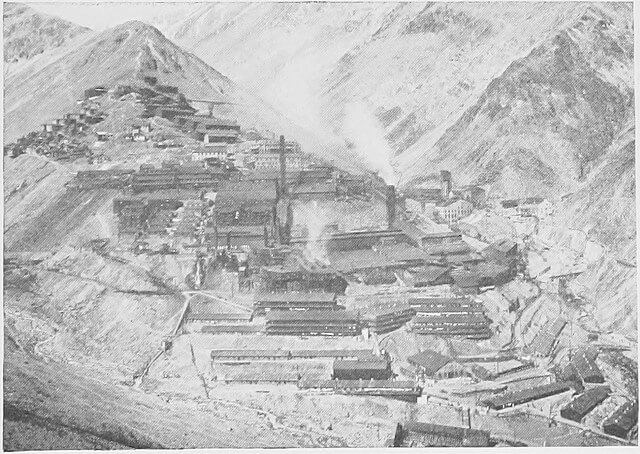
El Teniente smelter and Sewell townsite, Chile, circa 1920.
